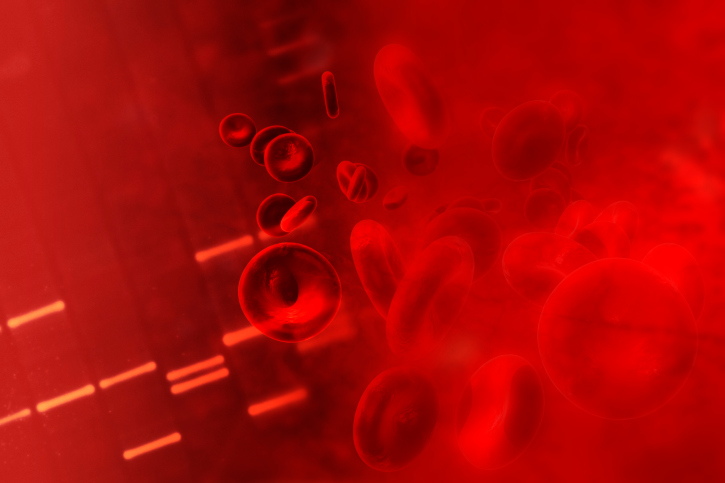Fixing anemia: from Iron to Gold
Low iron levels can affect your running performance. Here are some strategies to help you get enough iron in your diet.

 Six weeks before the 1984 Canadian Olympic marathon trials, Silvia Ruegger stepped out the door for a crucial 35K training run. Right from the start, her legs felt heavy and her energy levels were low, and after five miserable kilometres, the habitually determined and resilient athlete turned around and walked home. At her doctor’s office the next day, she got an explanation: her body’s iron stores were depleted. Ruegger’s experience was not unusual. Runners tend to lose more iron through the heavy sweating, repetitive foot-pounding that rupture blood cells, and gastrointestinal bleeding that can accompany competition and heavy training loads. And the risk of low iron for pre-menopausal female runners is compounded by the monthly blood loss of menstruation.
Six weeks before the 1984 Canadian Olympic marathon trials, Silvia Ruegger stepped out the door for a crucial 35K training run. Right from the start, her legs felt heavy and her energy levels were low, and after five miserable kilometres, the habitually determined and resilient athlete turned around and walked home. At her doctor’s office the next day, she got an explanation: her body’s iron stores were depleted. Ruegger’s experience was not unusual. Runners tend to lose more iron through the heavy sweating, repetitive foot-pounding that rupture blood cells, and gastrointestinal bleeding that can accompany competition and heavy training loads. And the risk of low iron for pre-menopausal female runners is compounded by the monthly blood loss of menstruation.
Related Articles
The iron test every runner should get
Low iron is a problem because we need it for the production of hemoglobin in our red blood cells, which carries oxygen from the lungs to the working muscles. If your muscles aren’t getting enough oxygen, it’s much harder to run. Sounds fairly straightforward – but iron levels are a little more complicated for runners than they are for the rest of the population. Most doctors test for “iron deficiency anemia” by measuring your hemoglobin levels. If they’re low, your iron stores are gone. Running performance, however, can suffer even if you just have “iron depletion,” in which your hemoglobin levels are still normal even though your iron stores are depleted. The best way to test for iron depletion is to have a doctor measure your “serum ferritin,” which is an index of iron stores in the body – but you may have to specifically ask your doctor to include that test in any blood work.
Normal hemoglobin concentration ranges from 14 to 18 g per 100 mL of blood for men, and 12 to 16 g per 100 mL of blood for women. For endurance athletes, the lower limits of normal are more like 13 g for men and 11 g for women, since we tend to have a larger blood volume. Normal ferritin levels have a wider range: 10 to 200 nanograms per mL for women, and 10 to 300 nanograms per mL for men. Guidelines for runners are more controversial, but David Martin, the physiologist responsible for testing elite distance runners for U.S.A. Track and Field since 1981 and author of Better Training for Distance Runners, believes that training and racing performance are usually affected when ferritin levels drop below 20 nanograms per mL. Performance usually improves dramatically once levels return above 25 nanograms per mL.
In Ruegger’s case, her ferritin registered at a paltry 9 nanograms per mL, so she embarked on an urgent mission to raise her iron levels by taking iron supplements and adjusting her diet. The classic advice – eat more red meat, especially liver – is still true, but there’s more to it. Some foods have iron that isn’t easily digestible, and other foods either help or hinder iron absorption. By paying attention to these pitfalls, Ruegger managed to raise her ferritin to around 40 nanograms per mL – and she did it in time to win the trials, going on to an eighth-place finish in Los Angeles.
******
Iron to Gold Recipe
Try spaghetti alla vongole for an iron-rich meal to fuel your training. A mere 2.5 oz serving of clams gives you a whopping 21 mg of heme iron – four times as much as the equivalent serving of beef.
Spaghetti alla Vongole
1 package (450 g) dry spaghetti
¼ cup olive oil
½ cup onion, finely chopped
3 cloves garlic, finely chopped
¼ tsp crushed red pepper flakes
1 cup grape tomatoes, halved
1 cup flat leaf parsley, chopped
2 cans (142 g each) baby clams, drained, juice reserved
Cook pasta in large pot of boiling salted water until just tender (al dente), then drain
Heat oil in large saucepan over medium heat. Add onion, garlic and red pepper flakes and sauté for 5 minutes, until soft. Add tomatoes, parsley and clams, cook for 2 minutes. Add reserved clam juice and bring mixture to a simmer. Add cooked pasta, toss and serve.
Serves 3-4 (depending on current weekly mileage).
Nutrients per Serving
115 g carbohydrate
50 g fat
30 g protein
250 mg sodium
75 mg calcium
115 % of daily iron requirement
505 calories
By Lauren King
This article appeared in a previous issue of Canadian Running magazine.


